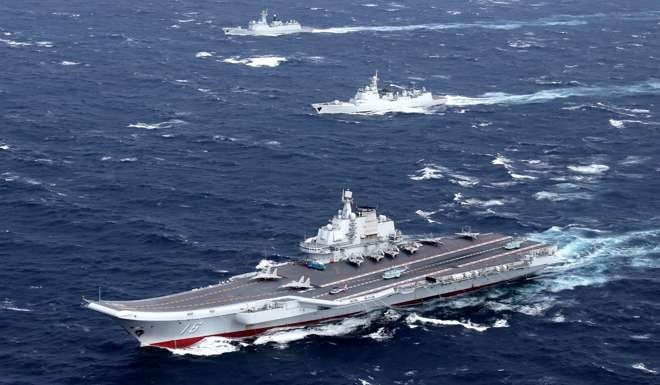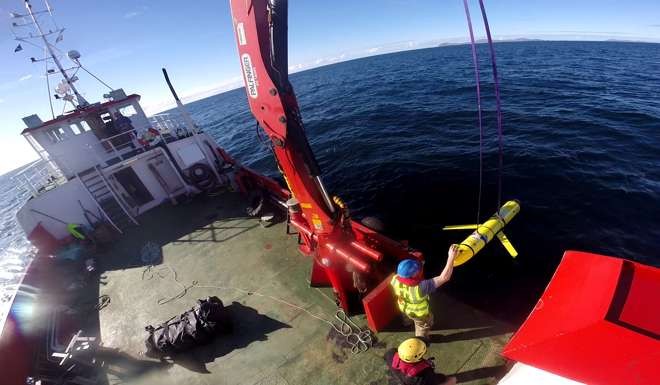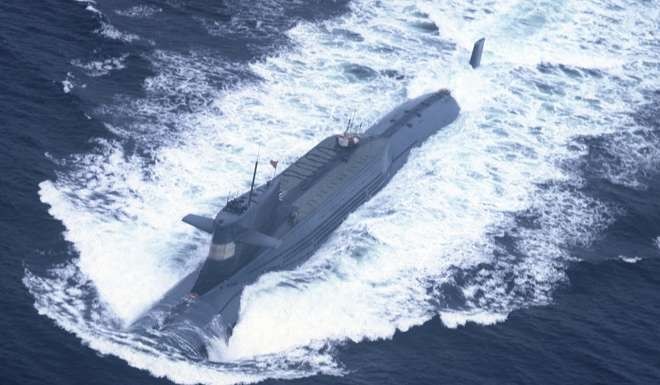Will Donald Trump aggravate the China-US arms race?
Both countries have been flexing their military muscles in the Western Pacific
PUBLISHED : Thursday, 19 January, 2017
Already engaged in a regional arms race with Washington, Beijing is bracing for even more military pressure from the United States after Donald Trump’s inauguration as US president on Friday.In remarks that would have triggered more fears in Beijing about a heightened US military presence and greater risk of confrontation, Trump’s nominee for secretary of state, Rex Tillerson, said China should be denied access to islands it has built in the South China Sea, and reaffirmed Washington’s commitment to the defence of Japan if China attempted to seize the Diaoyu Islands in the East China Sea, which are known as the Senkakus in Japan.‘Be prepared to throw punches’: Chinese military raises alarm over rising threat from spying“The arms race would only aggravate under the Trump administration,” Professor Shi Yinhong, director of the Centre for American Studies at Beijing’s Renmin University, said.Tillerson’s remarks, in a Senate confirmation hearing on January 11, came as both Beijing and Washington flexed their military muscles in the Western Pacific.The Chinese aircraft carrier Liaoning and its escorts entered the Taiwan Strait the same day, while the USS Carl Vinson carrier strike group was en route to the Western Pacific, where the Liaoning had just finished high-profile exercises.

Meanwhile, 10 F-35B fighters jets from a US Marine squadron landed in Iwakuni, Japan, on January 11 and 12, marking the first permanent international deployment of the advanced Joint Strike Fighter. On January 9, Chinese bombers had flown over the Korea Strait and Japan Sea, prompting South Korea and Japan, both US allies, to scramble fighter jets.
China and the US have also exchanged accusations over cyberwarfare in recent years. Chinese spies were accused of hacking into US workstations and servers at the Federal Deposit Insurance Corporation last year and were also blamed for a massive data breach at the US Office of Personnel Management in 2015 which compromised the data of more than 21 million people. In 2014, members of the People’s Liberation Army were indicted by the US for cyberespionage.
Trump has called for an end to the sequester on America’s defence budget – a US$500 billion cut over 10 years imposed in 2011 – and increasing military spending, while China’s military budget has been rising rapidly for about 30 years.
“There are structural contradictions of interest between the two countries in the region, and to develop or contain China’s military power is one of them,” Li Jie, a Beijing-based military expert, said.


In an article published after a meeting of the Central Military Commission, which oversees the People’s Liberation Army, in December, Liu Yazhou, the political commissar of PLA’s National Defence University, wrote that time was running out for the Chinese military to boost its capabilities. Liu highlighted three potential military challenges for China – a war in the Taiwan Strait, a war between China and Japan, and chaos along China’s borders – and said US influence would be a factor in each of them.
China could not bear the consequences of failure in any of the three events, Liu said, likening it to the humiliation China faced when it was defeated in the first Sino-Japanese war in 1895.
Even though Trump focused his toughest campaign rhetoric on trade, he infuriated Beijing after the US presidential election by speaking directly with Taiwanese President Tsai Ing-wen and subsequently questioning America’s one-China policy, the issue Beijing is most sensitive about. It has said it would use military force if necessary to prevent Taiwanese independence and is worried that a change in Washington’s Taiwan policy might encourage the self-ruled island to move towards it.
Shanghai-based military analyst Ni Lexiong said Beijing retaliated with military gestures designed to demonstrate its determination, including test firing of DF-21 anti-ship missiles, fighter jet patrols around the island, a live-fire drill by the aircraft carrier Liaoning combat group, and a flight over the Korea Strait by six nuclear-capable H-6 bombers.

Professor Zhang Yuquan, an international relations specialist at Sun Yat-sen University in Guangzhou, said: “As the situation surrounding the Taiwan issue gets worse, increasing military expenditure is an inevitable choice for China.”
Rising tensions across the Taiwan Strait have increased the military friction between the US and China, which was already at a high level due to naval confrontations in the South China Sea, the deployment of Chinese surface-to-air missiles there, and the planned deployment of America’s Terminal High Altitude Area Defence (THAAD) anti-missile system in South Korea.
Trump is expected, at the very least, to continue the US Navy freedom of navigation operations in the South China Sea, one of world’s busiest waterways, begun by the Obama administration. He has also backed the goal of expanding the US Navy fleet to 350 ships from the current 272, including up to three additional aircraft carriers, which means the US Navy will see its biggest build-up in decades.
The People’s Liberation Army Navy, meanwhile, has been on a massive ship-building spree since 2013, with about 20 vessels commissioned last year. China is expected to launch its second, and first home-made, aircraft carrier this year, in addition to new Type 055 guided-missile destroyers. The PLA Navy will have about 279 ships by 2020, according to a report by the Virginia-based Centre for Naval Analyses last year.

As for the air force, the US signed an agreement with Australia in December to base its world-leading F-22 stealth fighters in the north of that country as a response to what the head of the US Pacific Command, Admiral Harry Harris, described as China’s “aggressive” activity in the South China Sea.
Trump also wants more military planes, but complained about Lockheed Martin’s “overpriced” F-35, a “fifth-generation”, stealthy combat aircraft with sophisticated sensors and software, and asked Boeing to figure out the cost of a “comparable” version of the F/A-18, a plane that first saw combat three decades ago.
China’s Liaoning aircraft carrier conducts first live-fire drill as Beijing shows off military might
China has two domestically-designed “fifth-generation” stealth fighters – one in service and the other under development. The Chengdu J-20 entered service with the PLA Air Force last year, and the Shenyang J/FC-31 made its first public appearance at an air show in 2014. In addition, the first four of 24 Russian-made Sukhoi-35 fighters were delivered to the PLA Air Force in December.
“China could never catch up with the US, which has 11 aircraft carriers, and could never afford that,” Ni said. “But only by constantly developing new weapons, upgrading armaments and improving capability can China have a say on its own core interests. The US will not back off. Nor will China.”
But Zhang said China would manage the arms race carefully and show restraint to ensure it did not step into the same pitfall of excessive military spending that badly hurt the economy of the Soviet Union and had contributed to its eventual collapse.

Li said that with the Chinese economy still growing, and taking the advantages it enjoyed in terms of purchasing power parity into account, money was not yet a big problem.
That might not be true for the US. Since 2008, annual US spending on military research and development and procurement has fallen by more than a third. From 2011 to 2015, the Obama administration cut the US defence budget for five years in a row, amid a rapidly increasing fiscal deficit and mounting federal debt.
With Trump having promised big tax cuts, just how he would be able to fund his ambitious defence build-up remains in question.
But Li said heightened tensions with China could pay off for US arms manufacturers. “Trump will certainly use the ‘China threat’ theory to push other countries in the region to buy large amounts of American weapons,” he said.
Trump is familiar with at least one existing customer. In his first tweet after the phone call from Tsai, he said: “Interesting how the US sells Taiwan billions of dollars of military equipment but I should not accept a congratulatory call.”

The arms race between China and the US could also spill over into nuclear weapons. Trump tweeted last month that “the United States must greatly strengthen and expand its nuclear capability until such time as the world comes to its senses regarding nukes.” The New York Times said there were three ways that could be interpreted: modernising existing nuclear forces; developing delivery systems like nuclear cruise missiles; or deploy nuclear weapons closer to potential adversaries.
In a speech a few hours earlier, Russian President Vladimir Putin said his country should fortify its military nuclear potential and “develop missiles that can penetrate any missile-defence system”.
In November, China successfully test-fired a hypersonic missile delivery vehicle capable of carrying nuclear warheads at speeds of more than 12,000km/h, becoming the second country after the US to do so.
Zhao Tong, a fellow in the nuclear policy programme at the Beijing-based Carnegie-Tsinghua Centre for Global Policy said that had echoes with the nuclear arms race between the US and Russia over the past few years – from Nato’s missile-defence system to Russia’s development of a nuclear torpedo – which might ease a little if Trump was able to “get along” with Putin,
The third nuclear power in the region, China has a much smaller nuclear arsenal than the US or Russia – about 260 warheads compared to the 7,000 or so they each have, according to the Stockholm International Peace Research Institute. Beijing’s deterrence strategy has long relied on keeping a small but viable nuclear force for self-defence.

After its first atomic bomb test in 1964, the Chinese government pledged not to be the first to use nuclear weapons “at any time or under any circumstances”, and said it would only use them after being attacked by nuclear weapons. That commitment has been repeated in recent annual defence white papers.
Zhao said the strategy was unlikely to change even if Trump embarked on nuclear expansion, although China would gradually improve the quantity and quality of its nuclear weapons anyway, following its pre-planned pace.
“What really worries China more is the deployment of US missile-defence systems in the region, like the Terminal High Altitude Area Defence (THAAD) system set to be installed in South Korea,” he said.
Zhao said China would have to develop more sea-based missiles and multiple re-entry vehicles to be able to break through such defences.
Ni said military competition and confrontation between the US and China was likely to be long-lasting following Trump’s inauguration, and would only end when the Americans changed their “superiority” mindset and accepted the creation of a new strategic balance in the region.

Few of America’s Asian allies have cleared the defence spending bar that Trump has set for its allies in Europe. Trump has urged Nato countries to ease America’s financial burden by raising their defence expenditure to 2 percent of their gross domestic product, and has threatened to withdraw the American defensive shield they rely on if they do not step up to the plate. Among America’s Asian allies, Japan’s defence spending has only rarely topped 1 per cent of GDP, according to World Bank data, the Philippines’ has never been above 1.6 per cent in the 21st century and Australia’s has been below 2 per cent since 1995. Only South Korea has cleared the threshold, never falling below 2.3 per cent of GDP.
“Inevitably the countries in the Asia-Pacific region will keep investing in their military, largely on weapons,” Zhang said. “But until Chinese military power keeps growing and reaches a certain level, the neighbours’ participation in the arms race would turn out to be unnecessary.”
Li said bigger Chinese and American military presences in the region would inevitably increase the likelihood of military friction.
“But no one wants war, and with proper communication the frictions would not escalate into big problems,” he said.
No comments:
Post a Comment
Comments always welcome!